Catholics in Israel
Tourists who decide to journey to Israel come for all different reasons - sunshine, beaches, hiking trails, archaeological sites, food workshops, and adrenaline-charged activities such as sailing, rafting, and off-road jeep tours in the Judean desert. But one of the biggest attractions of a trip to the Holy Land - whether you’re a believer or not - is the fact that it’s home to three of the world’s major religions - Judaism, Islam, and, of course, Christianity.
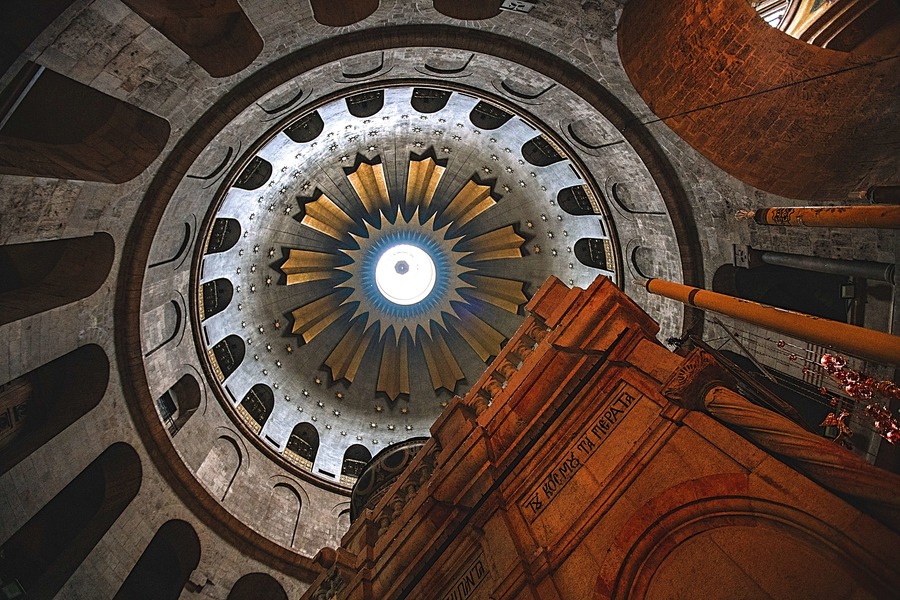
The dome over the Rotunda (Jesus's Tomb), Church of the Holy Sepulchre, Jerusalem. Photo credit: © Dmitry Mishin
For Christians, visiting Israel is often the pilgrimage of a lifetime. Every year, tens of thousands of Christians - both Protestants and Catholics - arrive in Israel, intent on exploring the life of Jesus. They will journey from his birthplace in Bethlehem, onto Nazareth, where he spent some of his early years, then continue to Galilee, where he spent a considerable period of time ministering, before traveling to Jerusalem, where Jesus spent the last week of his life.
There, they can retrace his footsteps, from the Last Supper with his disciples, to betrayal and arrest, in the Garden of Gethsemane, then his journey along the Via Dolorosa, to the cross, and finally to the Church of the Holy Sepulchre, where he was buried and rose again. At any time of the year, but particularly Easter or Christmas, this pilgrimage can be a very moving experience for Christian tourists.
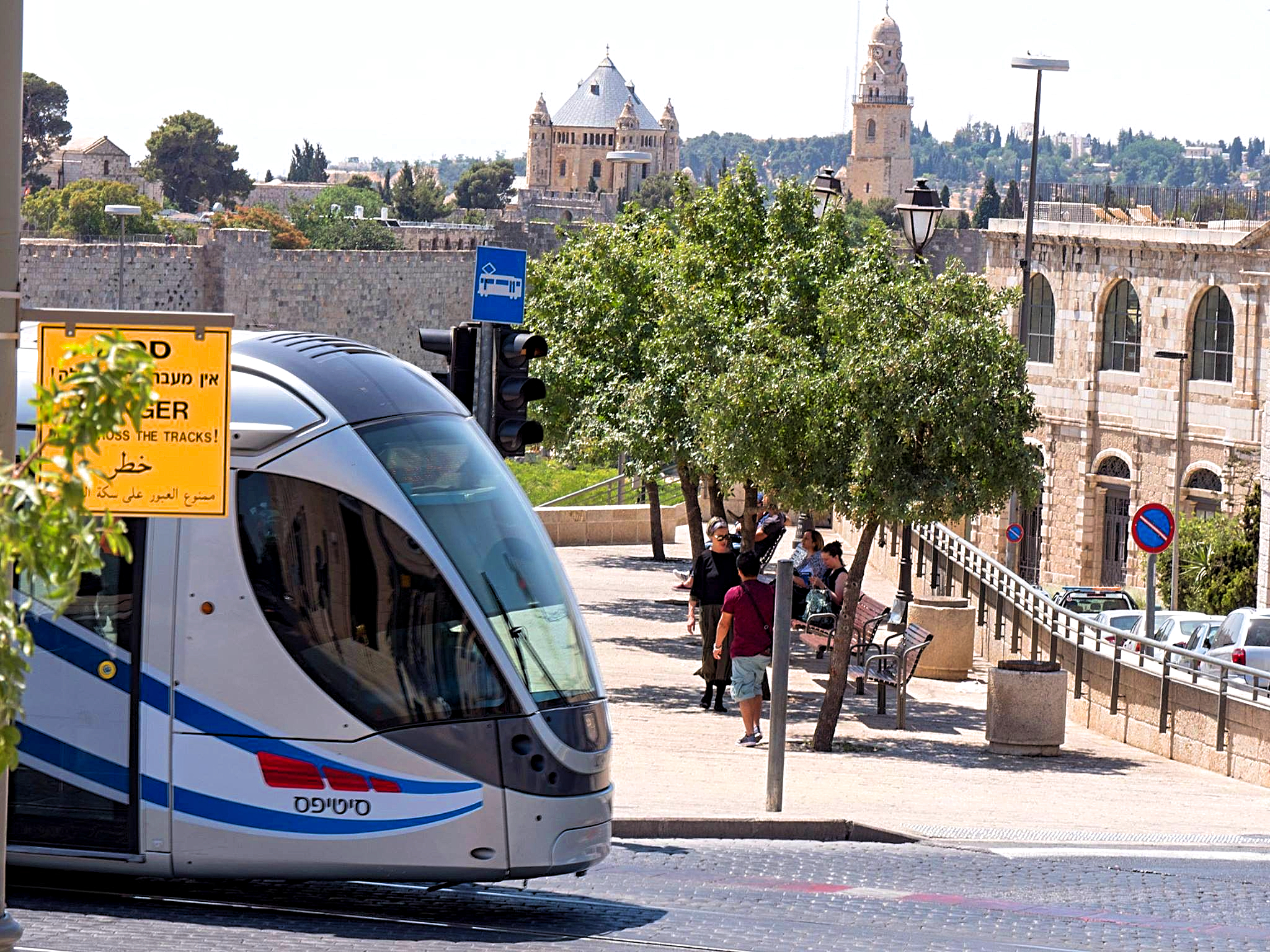
View of the Dormition Abbey on Mount Zion, Jerusalem, Israel. Photo credit: © Dmitry Mishin
Christian Population, Dioceses, Parishes, and Communities in IsraelSo how many Christians live in Israel? The number is approximately 200,000, which amounts to 1.5% of the population. The largest Christian community in Israel is the Greek Catholics (Melkite), who make up 40% of the total. Then you have the Greek Orthodox at 32%, Roman Catholics in Israel at 20%, and the Maronites at 7%. The remaining Christian groups amount to around 1% of the total.
Seven of the jurisdictions of the Catholic Churches in Israel overlap with each other - Armenian, Chaldean, Greek Melkite, Armenian Latin (Roman), Chaldean Maronite, and Syriac. At present, there are 103 Catholic parishes in Israel and the Palestinian Territories.
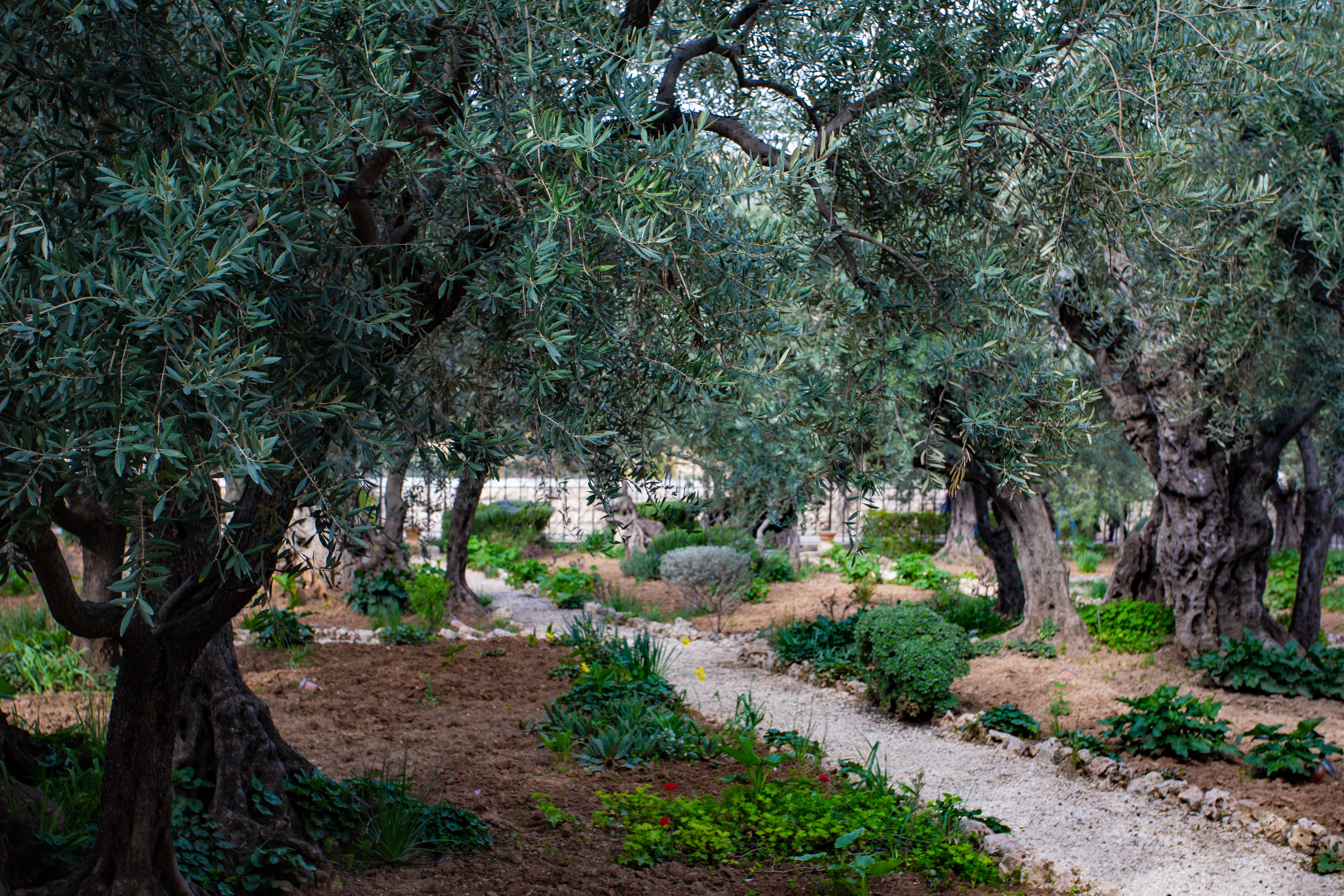
Garden of Gethsemane, Jerusalem, Israel. Photo by Stacey Franco on Unsplash
Representatives of the Holy See in Israel
The diplomatic relations between The Holy See and the State of Israel were first established on 30th December 1993. Three weeks later, after the two states adopted a ‘Fundamental Agreement’ a Vatican Nunciature in Israel and an Israeli embassy in Rome were opened. As the Vatican sees it, this ‘normalization’ is, to some degree, a way of promoting better Christian-Jewish relations which, historically, could be described as poor.
Israel Catholic Travel Guide
Today we’re looking at Catholic influences in Israel - because, for sure, the land of Israel is inextricably bound up with central events in Christian history, particularly the life and times of Jesus. It’s no surprise then that so many Catholics find the idea of a trip to the Holy Land and of visiting the Catholic holy sites in Jerusalem, Bethlehem, and Galilee completely compelling.
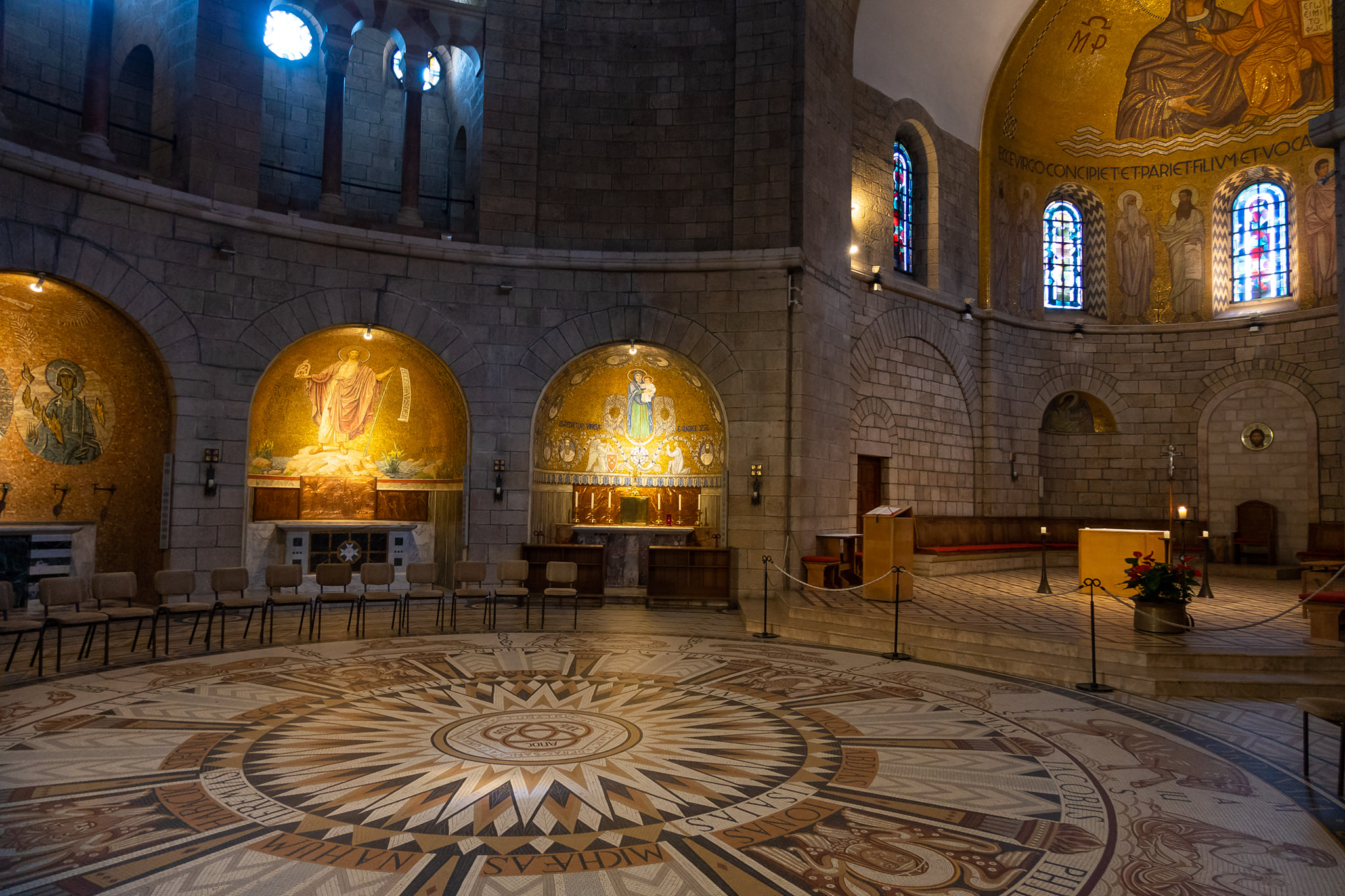
Inside the Dormition Abbey on Mount Zion, Jerusalem, Israel. Photo credit: © Dmitry Mishin
Catholic Churches in Jerusalem
Let’s start with Jerusalem, which has a considerable number of Catholic churches and holy sites, including:
1. Church of the Holy Sepulchre - also known as the Church of the Resurrection, this is probably the most famous church in the Old City and presumed to be the site where Jesus was both crucified and then rose from the dead. Custody of the site is shared between the Roman Catholic (also known as ‘Latins’), Greek Orthodox, Armenian Apostolic, Coptic Orthodox, Ethiopian Orthodox, and Syriac Orthodox Churches.
2. Bethphage - situated on the Mount of Olives, east of the Old City, Bethpage is mentioned in the Christian Bible as the place where Jesus sent his disciples to look for a donkey. This donkey (ass) he would later use to ride into Jerusalem in what Christians now celebrate as Palm Sunday. Meaning ‘House of the Early Figs’ Bethphage was built in 1883 and today it is run by the Franciscans.
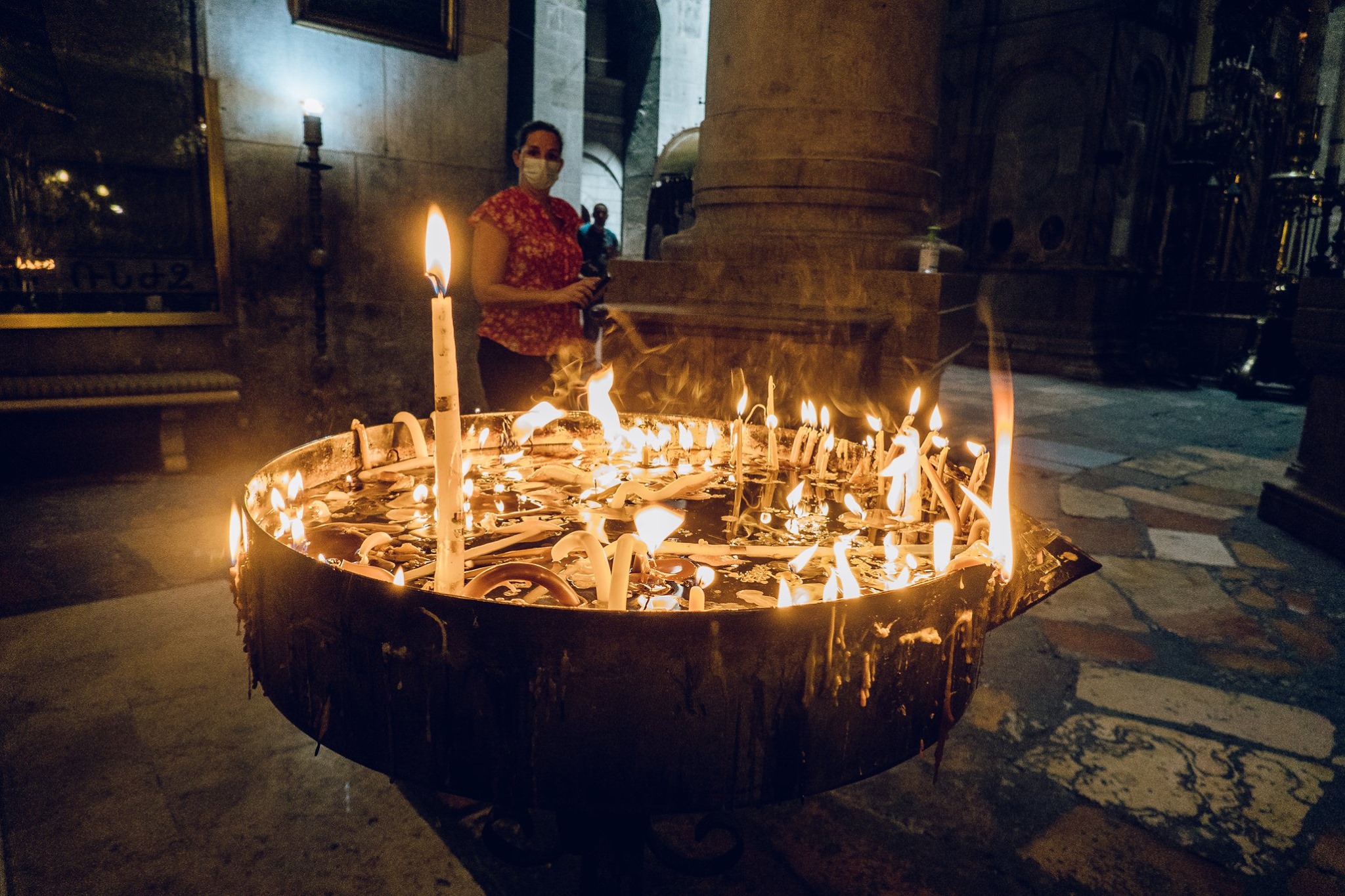
Candles lit in the Church of the Holy Sepulcher, Jerusalem. Photo credit: © Dmitry Mishin
3. Room of the Last Supper - located on the top floor of King David’s Tomb, the Cenacle is extremely holy for Catholics, since it is considered to be the place where Jesus held the Last Supper. ‘Cenacle’ in Latin means ‘dining room’ but Catholics also refer to the word as ‘retreat’. Today the building is controlled by the state of Israel although the Vatican contests this and says it belongs to the church.4. Dominus Flevit - this Roman Catholic church sits on the Mount of Olives, opposite the walls of the Old City of Jerusalem. Although only built in 1955, it occupies an ancient site, standing on the ruins of a Byzantine church that dates back to the 5th century. Designed by the Italian architect, Antonio Barluzzi, its famous window depicts a chalice and cross, within an arch-shaped design. Today, the administration of the church is carried out by the Franciscans.
5. Dormition Abbey - on Mount Zion, close to the Zion Gate, this Catholic Abbey belongs to the Benedictine monks and is said to be the spot at which Jesus’ mother, Mary, died. Completed in 1910 by the Latin Patriarch of Jerusalem, the site dates back to the 5th century.
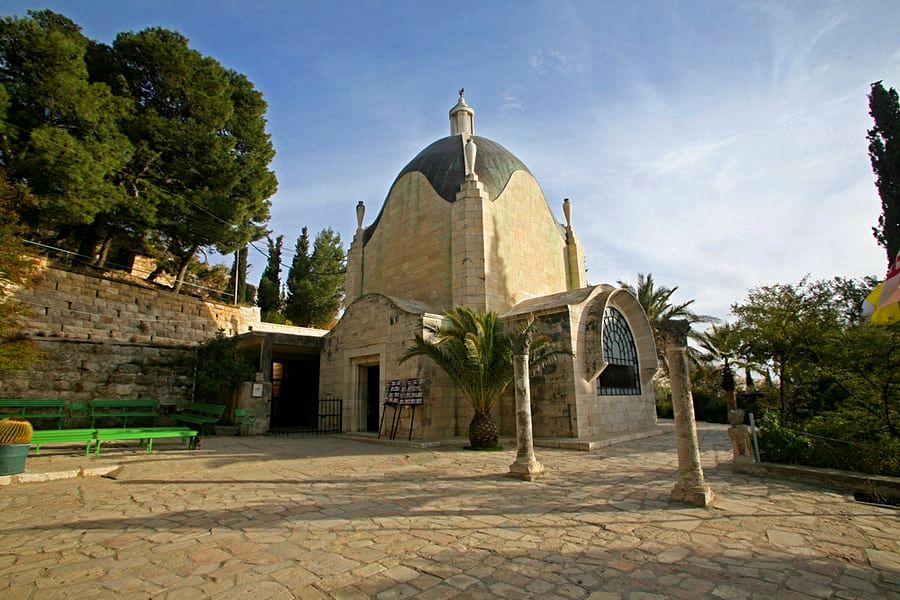
Dominus Flevit Сhurch, Jerusalem. Photo credit: © Shutterstock
7. Garden of Gethsemane - located at the foot of the Mount of Olives, this is an incredibly holy site for Catholics, as it is where Jesus prayed before his betrayal by Judas Iscariot and his subsequent arrest. Next to it is the Basilica of the Agony (also known as the Church of All Nations), built on the foundation of a Byzantine church that dates back to the 4th century.
8. Church of the Pater Noster - part of a Carmelite Monastery, this church also sits on the Mount of Olives. On its walls are a series of ceramic tiles, all bordered with colorful flowers, inside which the Lord’s Prayer is written in a wide variety of languages.
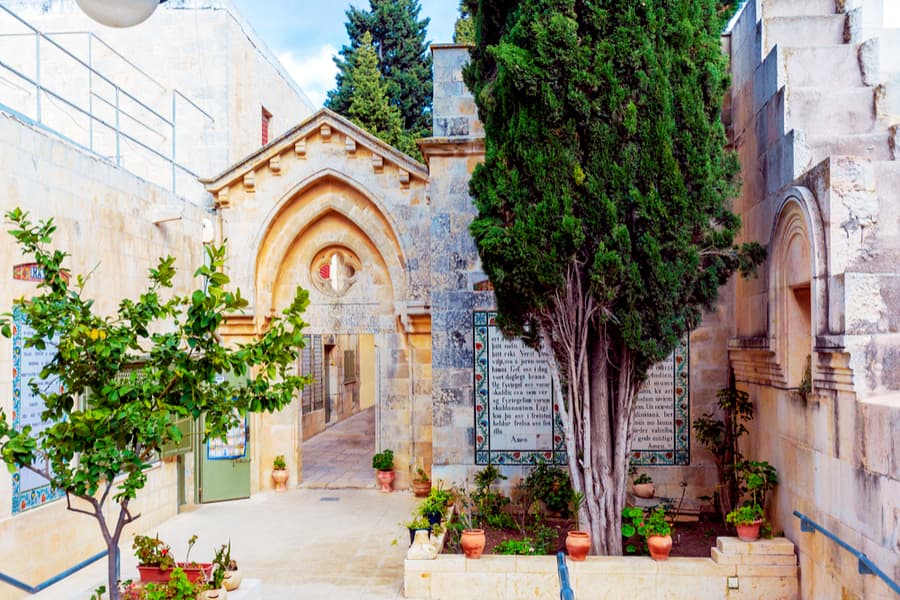
Entrance to the Church of Pater Naster. Jerusalem, Israel. Photo credit: © Shutterstock
9. Church of St. Anne - built in the 12th century, and situated just at the beginning of the Via Dolorosa. St. Anne’s is considered to be one of the most beautiful Crusader Churches in Israel. Today, it is owned and managed by the White Fathers, an Order of the Catholic Church so named because of the color of their robes.
10. St. Peter in Gallicantu - Built on the slopes of Mount Zion, this church is named after the disciple Peter’s denial of Jesus 'Gallicantu’ in Latin, which means ‘cocks crow’ and refers to Peter refusing to acknowledge his relationship with Jesus three times. The church today belongs to the Assumptionist Fathers, a French Order established in 1887 and so named for Mary’s assumption into heaven.
11. St. Stephen Church - located on the ancient road to Damascus, just outside the walls of the Old City, this Dominican monastery and French school for Biblical Archaeology, lie on the slope of the hill close to the Garden Tomb.
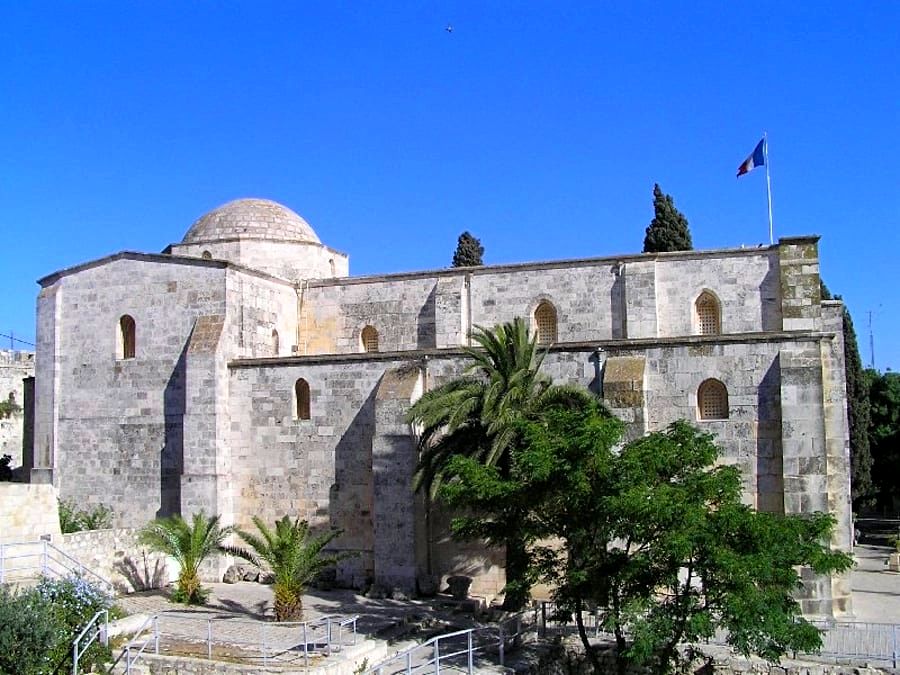
Church of St. Anne, Jerusalem. Photo credit: © Shutterstock
12. 3rd Station of the Cross- this is the point where Jesus fell for the first time, on his walk to Calvary. It is also the place where you will find a Polish catholic church, purchased by Armenian Catholics based in Poland.13. 4th Station of the Cross - according to tradition, this is where the Virgin Mary stood and watched her son Jesus suffer, as he walked with this cross to his death. This is also the location of the Armenian Catholic Church of Our Lady of the Spasm, built in 1881.
14. 5th Station of the Cross - the fifth Station of the Cross is outside the Franciscan Chapel of Simon of Cyrene, and at this popular pilgrimage stop, it is traditional to place your hand inside the imprint where Jesus is thought to have leaned against the wall.
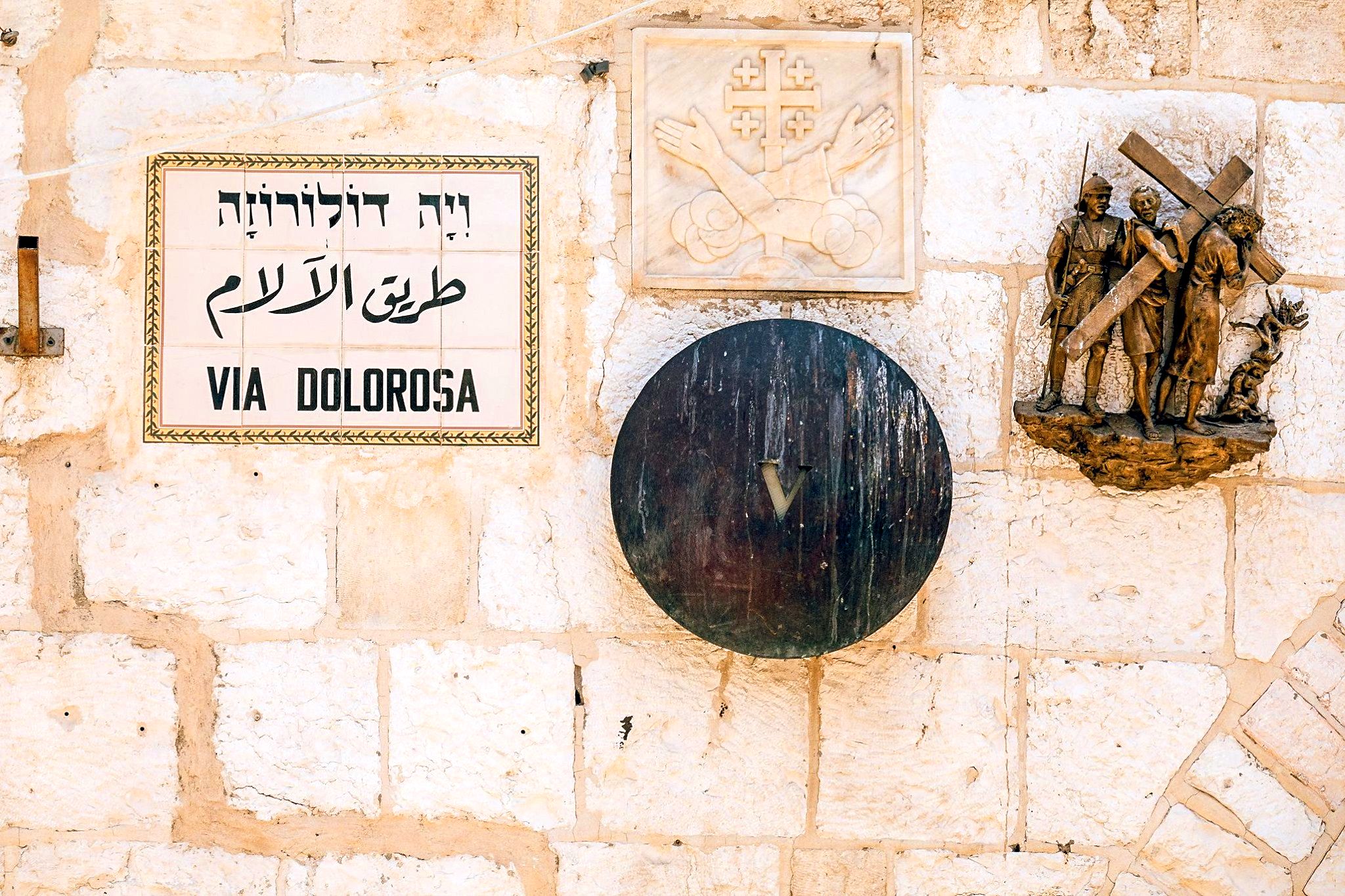
5th Station of the Cross, Jerusalem. Photo credit: © Dmitry Mishin
15. 6th Station of the Cross - here sits the Greek Catholic Church of St. Veronica, built in 1866, and today run by the Little Sisters of Jesus. It is believed to be the place where a woman named Veronica wiped Jesus’s face of blood, with a cloth.
16. Church of the Visitation - formerly known as the Abbey Church of St. John in the Woods, this catholic church in Ein Kerem, a hillside village in south-west Jerusalem, is run by Franciscans and honors the visit paid by the Virgin Mary (the mother of Jesus) to Elizabeth (the mother of John the Baptist).
17. Monastery of St. John in the Desert - built next to a spring on a wooded slope, this monastery is also run by Franciscans and is a short distance from Ein Kerem (considered to be the birthplace of John the Baptist).
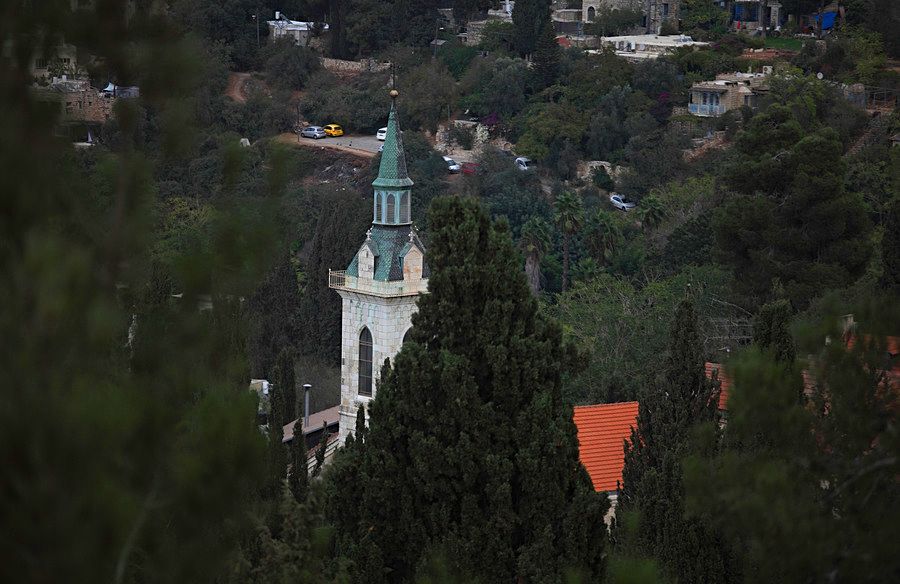
Church of the Visitation, Ein Kerem, Jerusalem. Photo credit: © Dan Porges
Catholic Churches in Central Israel and the West Bank
1. Emmaus Church of the Crusaders - also known as the Church of the Resurrection and the Abbey of St. Mary this Benedictine monastery sits in Abu Gosh, a village close to Jerusalem. Traditionally, it is known as the place where Christ first appeared after his resurrection.
2. Shepherds' Field - southeast of Bethlehem, in Beit Sahour, this Roman Catholic church is run by the Franciscans. It marks the place, according to Catholic tradition, where Christ’s birth was first announced by the angels.
3. St. Lazarus - situated in the town of al-Eizariya (identified with biblical Bethany), this West Bank church is close to what Christian tradition says is the tomb of Lazarus and also the site of the house where Mary, Martha, and Lazarus once lived.
4. Church of the Nativity, Bethlehem - one of the oldest working churches in existence, this is a very holy site for all Christians, who believe its grotto to be the spot at which Mary gave birth to Jesus. Its actual guardianship is shared by three Church denominations - Armenian, Roman Catholic, and Greek Orthodox.
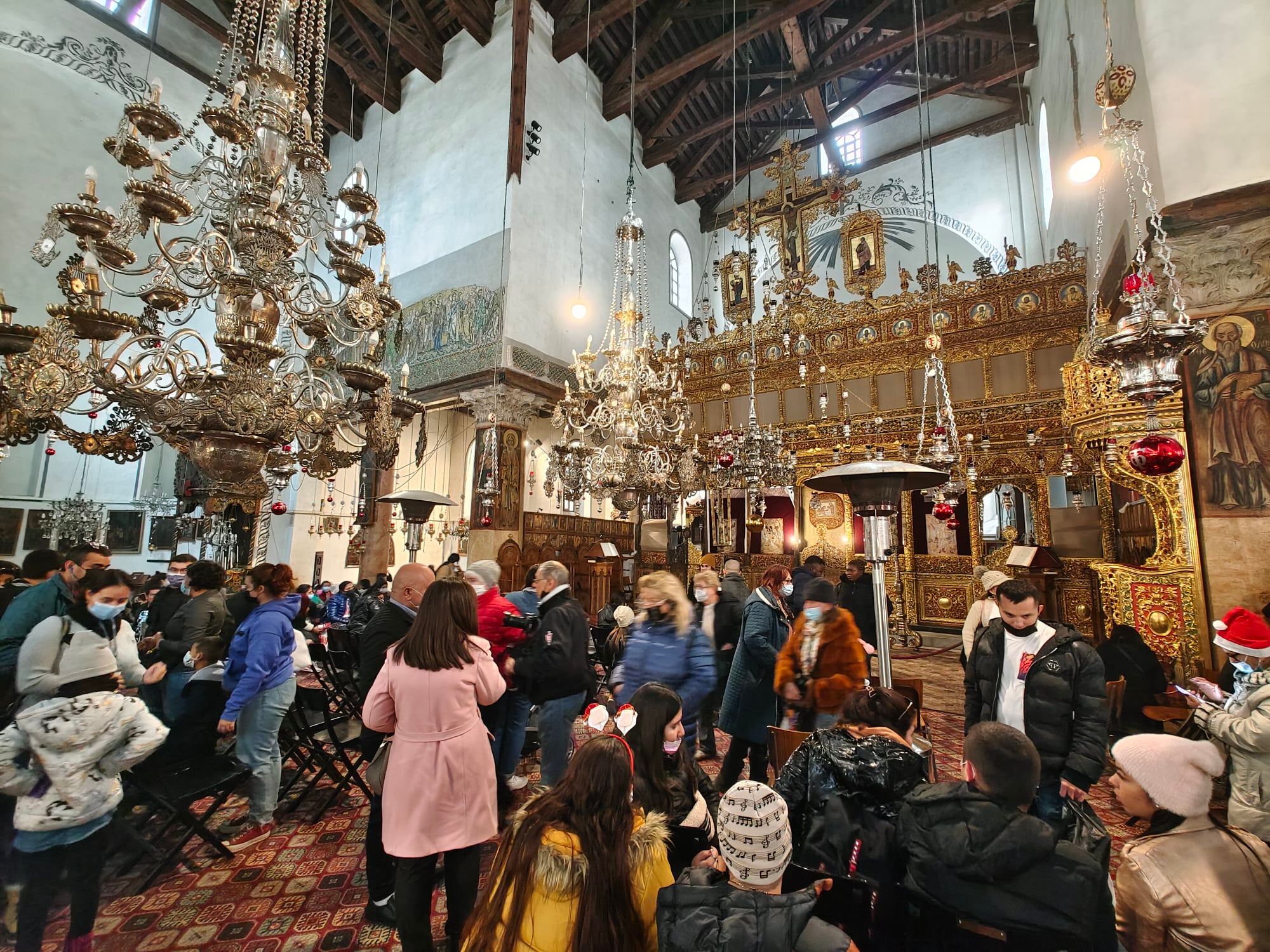
Church of the Nativity, Bethlehem. Photo credit: © Dmitry Mishin
5. Milk Grotto, Bethlehem - also known as the Grotto of our Lady, Christian tradition says is the place where the Holy Family found refuge during the Massacre of the Innocents before they could flee to Egypt. The name comes from the story that the Virgin Mary spilt a ‘drop of milk’ on the cave’s floor.6. Emmaus Qubeibeh, Qubeibeh - this catholic church, owned by Franciscans, is about 10 km (7 miles from Jerusalem). Its sanctuary is where, according to tradition, a resurrected Jesus appeared on the road to Emmaus before two of his disciples, Simeon and Cleopas.
7. House of Parables, Taybeh - this is situated in the Palestinian Christian village of Taybeh, about 30 km northwest of Jerusalem. The ‘Parable House’ lies within the Roman Catholic church courtyard and its wooden door is estimated to be 2,000 years old.
8. Church of Nicodemus, Ramla - Managed by the Franciscans, since the 16th century the site of this monastery is considered to have been the home of Joseph of Arimathea, who was one of Jesus’ disciples and asked for permission to take him down from the cross and bury him.
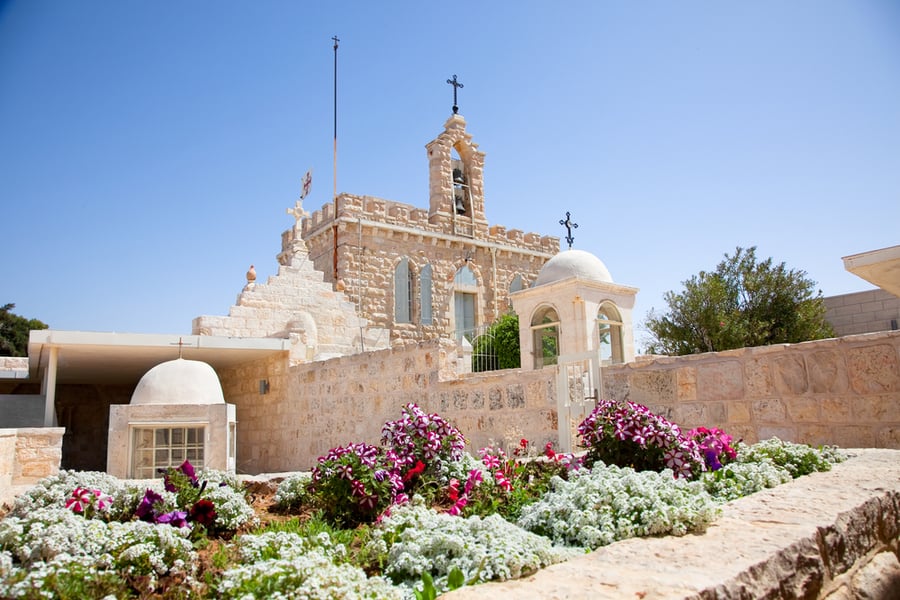
The Milk Grotto, Bethlehem. Photo credit: © Shutterstock
Catholic Churches in Galilee
1. Stella Maris, Haifa - this 19th-century Carmelite monastery was built on the orders of Brother Cassini and opened in 1836, ‘Stella Maris’ meaning ‘Star of the Sea.’
2. Wedding Church, Cana - also known as the ‘First Miracle Church’ and today operated by Franciscans, it is considered to be the place where Jesus performed his first miracle, turning water into wine at a poor couple’s wedding feast.
3. House of Peter, Capernaum - this modern catholic pilgrimage church is part of a Franciscan monastery. Presumed to be the spot at which the disciple Peter once lived, it sits on the shores of the Sea of Galilee.
4. Church of Beatitudes - situated on a small hill, overlooking the Sea of Galilee, this church sits close to the ruins of a small Byzantine-era church, dating back to the 4th century. The spot is considered to be where Jesus delivered his Sermon on the Mount.
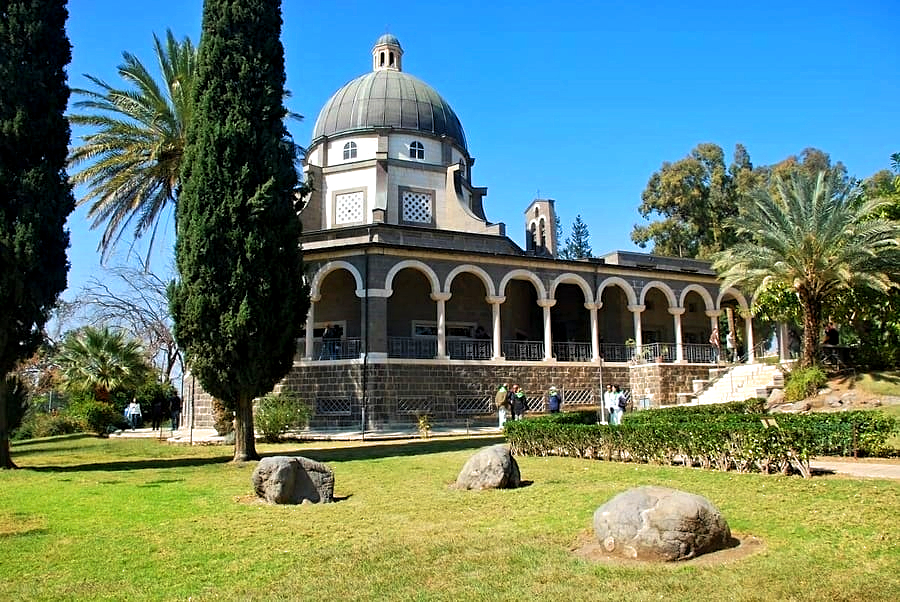
Church of Beatitudes, Israel. Photo credit: © Shutterstock
5. Muhraqa Monastery - this Carmelite Monastery is situated at the spot where the Prophet Elijah is supposed to have confronted the false prophets of Baal. Situated in the village of Daliat-el-Carmel, it affords spectacular views of the Jezreel Valley.6. Church of the Annunciation, Nazareth - also referred to as the ‘Basilica of the Annunciation’ this church is managed by Franciscans and stands over the cave which Catholics believe was once the home of the Virgin Mary. Its cupola dominates modern Nazareth and today it is the largest church in the Middle East.
7. Church of St. Joseph, Nazareth - this Franciscan church was built in 1914 over the remains of much older churches. According to tradition, this is where the carpentry workshop of Joseph, Jesus’s father, stood.
8. Synagogue Church, Nazareth - this Greek Melkite Catholic church lies in the heart of Nazareth and is so named because of a claim that it is the same building that was once the village synagogue in the time of Jesus.
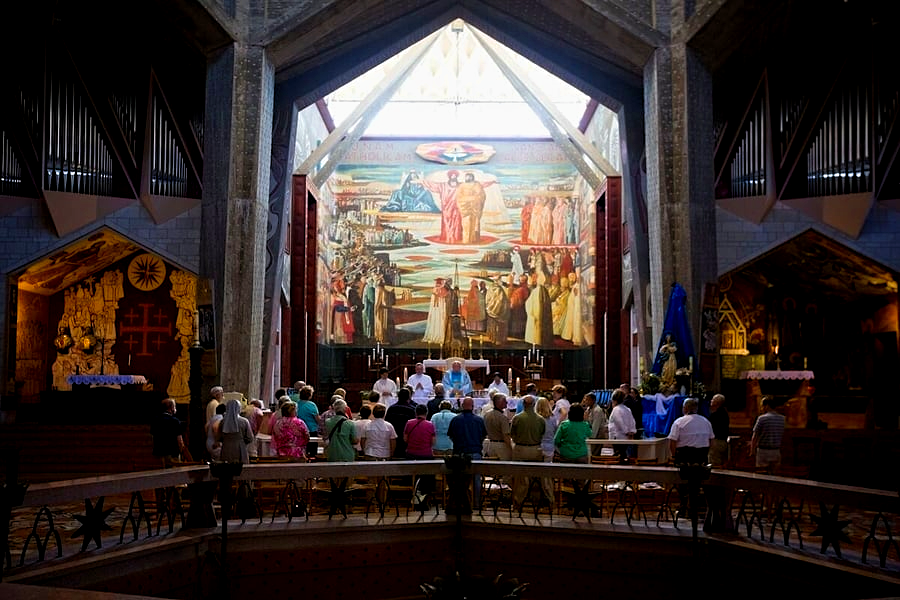
Church of the Annunciation, Nazareth, Israel. Photo credit: © Shutterstock
9. Church of Multiplication, Tabgha - this Benedictine church is located in Tabgha, on the northwest shores of the Sea of Galilee. It is built on the site of two former churches, dating back to Byzantine times.10. Church of the Primacy of St. Peter, Tabgha - this Franciscan church in Tabgha, also close to the shores of the Galilee, commemorates and is supposed to mark the spot where Jesus reinstated Peter as leader of the Disciples.
11. Сhurch of Transfiguration, Mount Tabor - this church is part of a Franciscan monastery built in 1922 by the Italian architect Antonio Barluzzi. It is considered by Catholics to be the site at which the transfiguration of Jesus occurred when Jesus met with Elijah and Moses.
12. Church of St. Peter, Tiberias - next to a monastery in Tiberias, on the shores of the Sea of Galilee, this unusual Crusader church is administered by Koinonia Giovanni Battista, a Catholic community in Italy. Its roof is shaped like a boat that has been upturned, which references St. Peter, a fisherman on the Galilee who Jesus eventually chose as his lead disciple.
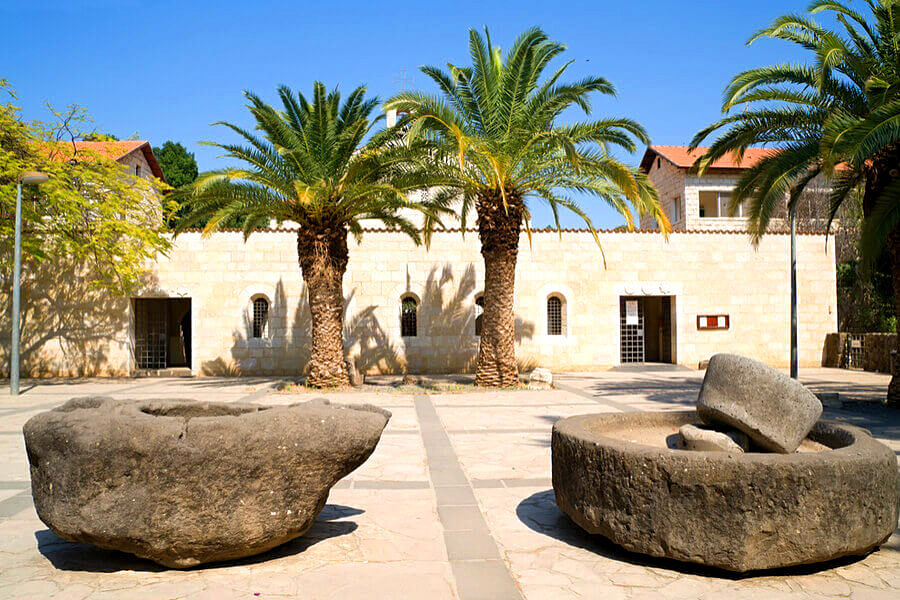
Church of Multiplication, Tabgha, Israel. Photo credit: © Shutterstock
If you are interested in visiting Catholic churches in Israel, feel free to check out our Christian Israel Tour Packages and Christian day tours.
 Login / Register
Login / Register
 Contact Us
Contact Us
 Certificate of Excellence
Certificate of Excellence Guaranteed Departure
Guaranteed Departure Low Prices Guaranteed
Low Prices Guaranteed 24/7 Support
24/7 Support




